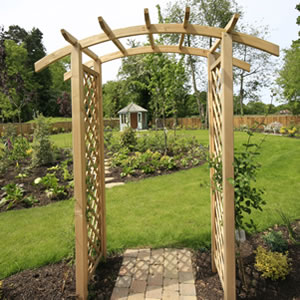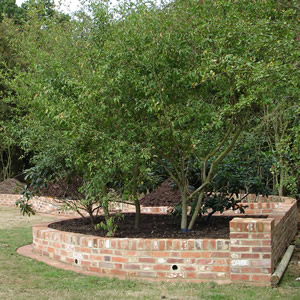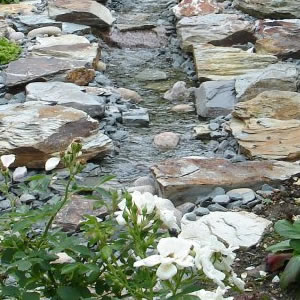How To Cope With Heavy Clay Soil
Anyone who has a garden with heavy clay soil will know about the difficulties of gardening on it. The soil is cold, muddy, poorly drained and impossibly heavy in a wet winter (which, let’s face it, is most winters in this country), and then bakes rock hard in a hot dry summer.
All of which means that the garden is difficult if not impossible to cultivate for much of the year. If you do try to dig the soil (or even walk on the lawn) when it is heavy and wet, then the tiny clay particles can become even more compacted and make the drainage situation even worse. A problem highlighted by the recent wet weather of course.





[clear]
Step 1: Improving soil structure
 Much of the advice on dealing with heavy clay focuses on ways of improving soil structure:
Much of the advice on dealing with heavy clay focuses on ways of improving soil structure:
- Digging it over in a dry autumn spell, then leaving the frosts to break down the solid clods (if of course the weather plays ball)
- Improving the structure and drainage by adding grit and sharp sand – the problem being that this simply makes an already heavy soil even heavier
- Improving the structure and drainage by incorporating bulky organic matter, such as manure (with or without straw), composted bark, leaf mould, garden compost, mushroom compost) etc. In our opinion, this is the best way of improving a clay soil (it enables the fine particles to be bound into larger “crumbs”), but it does involve a lot of hard work!
[clear]
Step 2: Easier Access
 Walking over clay soil can compact the tiny clay particles and make the drainage situation even worse:
Walking over clay soil can compact the tiny clay particles and make the drainage situation even worse:
- To avoid walking over the soil when it is sodden, add a few more paths within borders to provide easy access to plants
[clear]
Step 3: Mulching
 Spreading a mulch of organic matter over the soil can help enormously:
Spreading a mulch of organic matter over the soil can help enormously:
- It doesn’t even have to be dug in – worms will do the job for you over time
- The mulch can also give a nice neat look to the borders. The process will, sadly, need to be repeated next year.
- Alternatively, think about building some raised beds. They don’t have to be very high, and they can be filled with a good soil / compost mix.
[clear]
Step 4: Planting
 Take care what and how you plant! Sounds obvious, but it is often forgotten:
Take care what and how you plant! Sounds obvious, but it is often forgotten:
- Prepare planting holes thoroughly. Dig out more than enough soil, and infill around the plant with a better draining soil / compost mix.
- Choose the right plants. Clay soils may have their problems, but they are normally rich in nutrients if they can be persuaded to give them up. There are many plants which will thrive in them e.g. shrubs such as Viburnums and Spiraeas, many trees, and bulbs such as Snowdrops.
- And if all else fails, learn to love roses! With their deep roots and demand for nutrients, roses normally thrive in clay soils during the winter cold and wet, and cope happily in summer drought. As a garden designer who saw roses fall out of favour a few decades ago, I am delighted to see them make a well-deserved come back. The modern disease resistant varieties, used like any other flowering shrub, are truly worthy of their place in the garden – for their long flowering season, and ability to cope with difficult clay soils.
[clear]
Step 5: Drainage
 If the drainage problem is severe, consider installing land drains or similar.
If the drainage problem is severe, consider installing land drains or similar.
(You may be interested to read about two of our recent projects where it was necessary to incorporate well-designed drainage solutions).
Do contact us if you would like more advice on how to cope with your particular soil type, or if you need advice on designing/installing a drainage solution.
We have a long gently sloping (away from house) garden approx 35m long and 8m wide. We have some ideas in mind. Do you do leveling terraces? Also do we need to have a to-scale design for you or can you use our ideas and drawings and make them to-scale? Also do you charge for giving an estimate quote for the job?
Thanks very much.
Thank you for your comment; as a general rule, we would normally be involved from the design stage onwards, and would then construct the garden from our own scale drawings. Please do give us a call if you would like more information – 0118 934 2958.